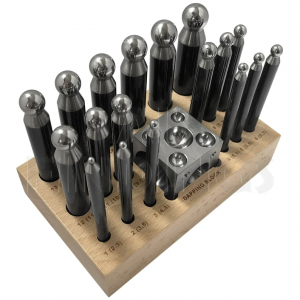- Joined
- Feb 28, 2024
- Messages
- 8
Hi, I'm currently trying to make woodworking tools as a way to get some "niche" tools I wouldn't like to spend a lot of money on as well as to get some practice in heat treatment and manual metal working.
In the end I'd like to get a used small lathe and later on a similar mill but that's besides the point in this case.
What I'm currently doing (mostly for practice) is verifying if the different types of steel I have (some mystery, some hss, some hcs) tolerate a "proper" heat treatment and then performing a "manual subtractive process" (a.k.a I only have files) to achieve the geometries I want before profiling, heat treating and sharpening.
One of the first things I made as a test was a specific gouge I needed out of a spade bit (yes, I know...) but the problem I knew I would find (and found) was that since I'm not forging it and I don't have any type of forms I ended up crudely forming the blade with my locking pliers and then "patching" the profile with files which was not ideal.
With this in mind I thought that I could get an arbor press, manually create a set of forms (is that the right term?) and then combine them with my "mapp" torch to get the initial profile, anneal and continue with my subtractive process.
What I'd like to get out of this is to be stamp some proper curves but also minimally flatten rod steel or cut files with a decent stable pattern (for fun).
I'd really appreciate any input.
In the end I'd like to get a used small lathe and later on a similar mill but that's besides the point in this case.
What I'm currently doing (mostly for practice) is verifying if the different types of steel I have (some mystery, some hss, some hcs) tolerate a "proper" heat treatment and then performing a "manual subtractive process" (a.k.a I only have files) to achieve the geometries I want before profiling, heat treating and sharpening.
One of the first things I made as a test was a specific gouge I needed out of a spade bit (yes, I know...) but the problem I knew I would find (and found) was that since I'm not forging it and I don't have any type of forms I ended up crudely forming the blade with my locking pliers and then "patching" the profile with files which was not ideal.
With this in mind I thought that I could get an arbor press, manually create a set of forms (is that the right term?) and then combine them with my "mapp" torch to get the initial profile, anneal and continue with my subtractive process.
What I'd like to get out of this is to be stamp some proper curves but also minimally flatten rod steel or cut files with a decent stable pattern (for fun).
I'd really appreciate any input.


